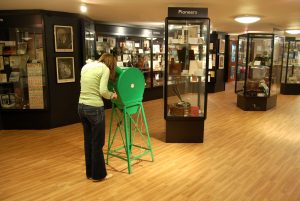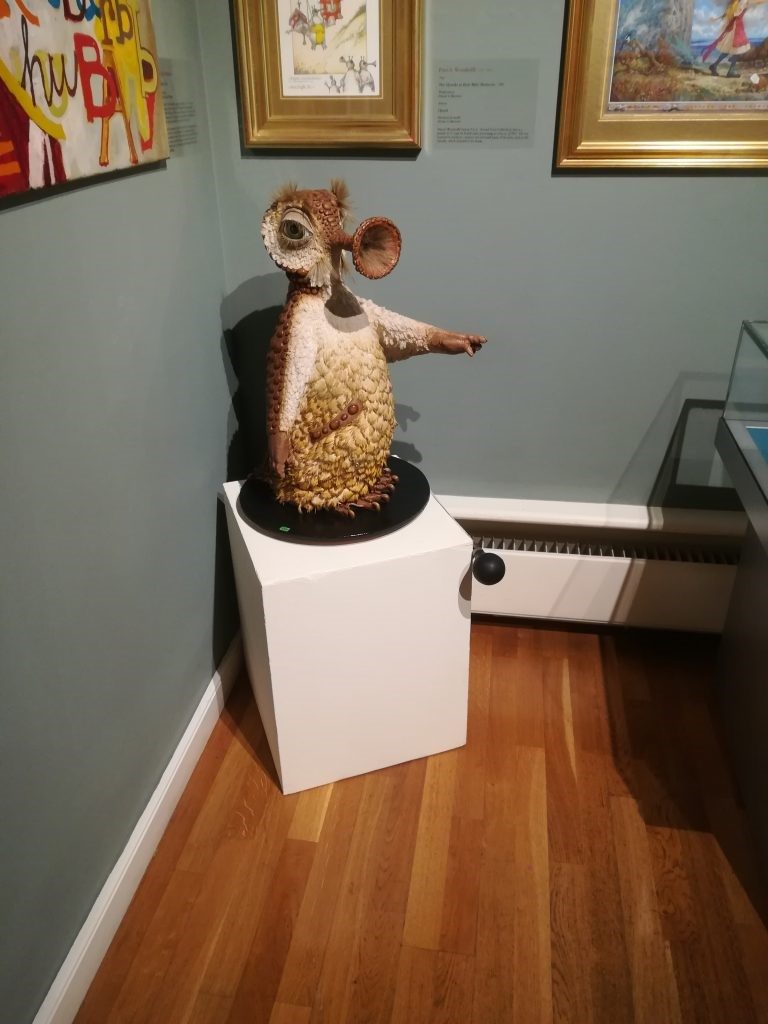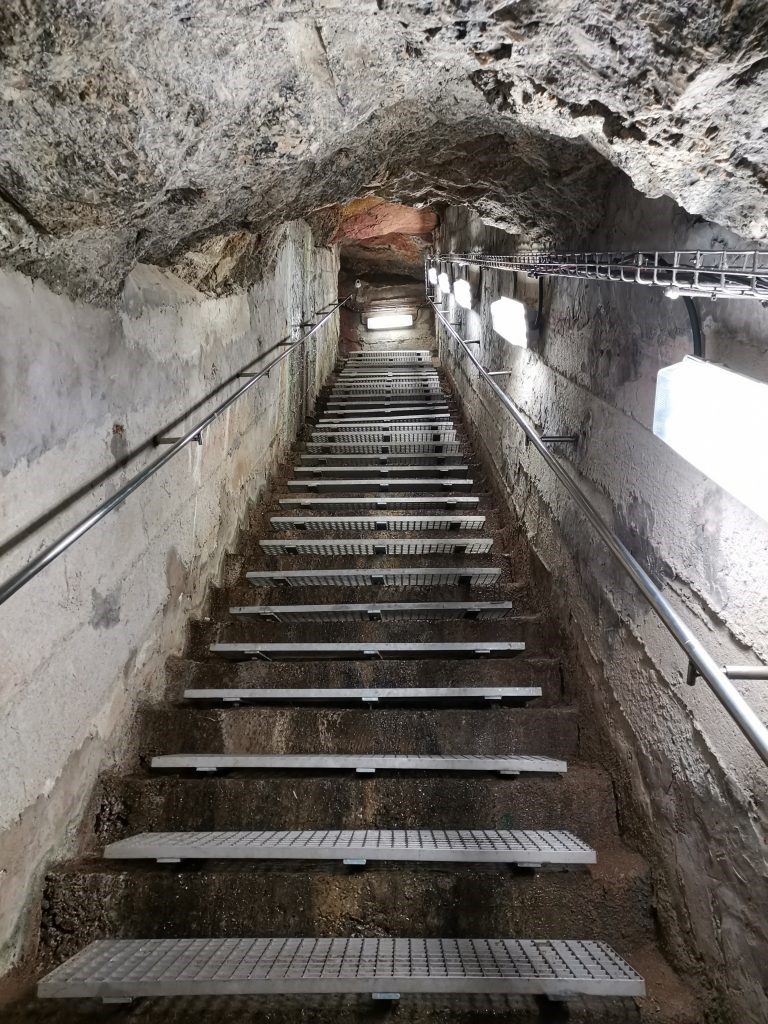A core aspect of heritage work at the University of Exeter is the creation and development of work opportunities within the university and with external heritage organisations and partners. These opportunities can be invaluable for students seeking to learn skills and gain experience alongside their undergraduate or postgraduate degrees. Current Graduate Business Partners Ben and Georgia and heritage intern Eloise tell us about their experiences working within and outside of the university and what they have gained from them.
Becoming Graduate Business Partners:
Since June, Ben and Georgia have been undertaking Graduate Business Partnerships (GBP’s) as Engagement and Campaign Support Officers within the Innovation, Impact and Business (IIB) directorate at the University of Exeter. The Graduate Business Partnership scheme helps recent graduates secure full-time graduate roles, with supportive employers in the South West.
Ben tells us about his experience:
For my GBP role, I provide communications and publicity for the many different research projects and partnerships based in IIB. This involves all sorts activity – from social media, to developing blog posts, to web design. The most exciting thing for me is the scope. IIB is the interface between the university and external organisations, be they charities, NGOs, businesses or the public sector. Because of this, the team in IIB work with academics across all areas of university activity, so the projects I work on are incredibly varied.
Since starting four months ago, I’ve worked closely with the UNESCO Exeter City of Literature team (a personal favourite as a writer & culture lad), promoted environmentally focused projects (such as EEIST and Green Futures), and supported the university’s strategic partnerships with the Met Office and National Trust. I’ve particularly enjoyed speaking to academics about their work, whether this is ground-breaking research into vaccine passports or community interventions to improve the lives of people living with dementia.
As someone interested in both academic research and creative, editorial work, this role’s been a fantastic, challenging and insightful bridge between the two. I’ve developed a bunch of new skills and experiences (specifically in social media and newsletter engagement, writing and design), but also – by talking to university staff with experience in research, journalism and cultural development – a strong insight as to where I’d most like to work in the future.
An insight into Georgia’s experience as a GBP:
As an Engagement and Campaign Support Officer, I provide communications support for researchers and partners who work with the IIB team. This can be in the form of a blog post or social media content, to event planning or design input. I have recently been working with Ben to create the IIB Year in Review 2020-21, a new campaign that celebrates academic success stories from the past year. Learning about some of the great projects and partnerships which come out of the University has been particularly interesting and insightful.
Working as a GBP has also allowed me to develop my design skills, primarily via Adobe InDesign. I have been working on ‘The Exeter Entrepreneur’ – a handbook designed to guide people through their entrepreneurial journey, emphasising the key programmes and support that the University of Exeter and SETsquared offers. Additionally, I have created a Press Pack for the Exeter City of Literature group – highlighting the positive impact of the UNESCO title.
Outside of day-to-day work, the University encourages us to engage with personal development, whether this be developing my skills further or delving deeper into the sections of work that particularly interest me. Within IIB, we also have social hubs that enable local people to meet up and engage with each other out of the office. I found this particularly beneficial when working from home, as the South Devon social hub enabled me to meet co-workers face-to-face in a more informal setting.
The IIB team have created a well-rounded and supportive environment that has allowed me to further develop my skills and pursue personal areas of interest. Learning about the magnificent projects being researched and developed at the University has been a particular highlight.
Eloise Speechly: Interning with heritage partner The Charles Causley Trust:
Archaeology graduate and previous Professional Pathways intern Eloise has been undertaking an internship with The Charles Causley Trust throughout summer of 2021. The Charles Causley Trust is an organisation that maintains and raises the profile and appreciation of the work of Cornish-born writer Charles Causley, and has recently signed a Memorandum of Understanding (MoU) with the University of Exeter after previous collaboration.
Eloise tells us about her work for the Charles Causley Trust Festival of Arts and Literature:
Over this past summer, I was offered the privileged position to peak behind the scenes at what goes into creating an arts and culture festival, and the difficulties the current pandemic has caused. As an intern at the Charles Causley Trust, I was given unique insight into organising a large-scale cultural festival and gained first-hand experience in undertaking a portion of its administration.
As an archaeology graduate, I was keen to make my mark and help tackle the mammoth task of creating a fun and interactive festival experience for all the family, in many cases from the comfort of their own home. With my trusty sausage dog Sammie by my side, I was entrusted with coordinating and communicating with acts, performers and artists the festival was featuring, ensuring that time tabling ran smoothly and gave visitors a chance to see as many events as possible.
Though working remotely had its set-backs, with interaction being limited to the video chatting format, I couldn’t have asked for better employers or co-workers. The Causley Trust team made sure I felt welcomed with regular video meetings to check in on how my work was progressing. I cannot express in words how unbelievably enriching both personally and professionally this internship has proven to be long term as I go forward with my career!
To find out more about the work of The Charles Causley Trust, see their website.
For new and returning Exeter students looking for internship and work experience opportunities, check out the Handshake careers platform to keep up to date with current opportunities at both the university and with external organisations. With new roles approved every day, students can select their particular work interests to receive personalised job notifications.
Also see https://blogs.exeter.ac.uk/internships/ for more accounts written by students about their work experiences across a variety of degree programmes.





